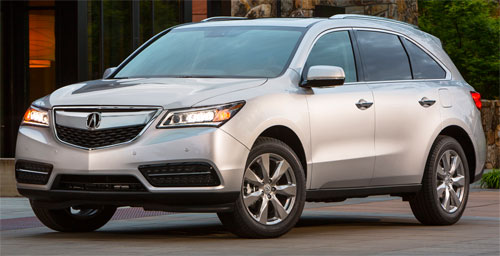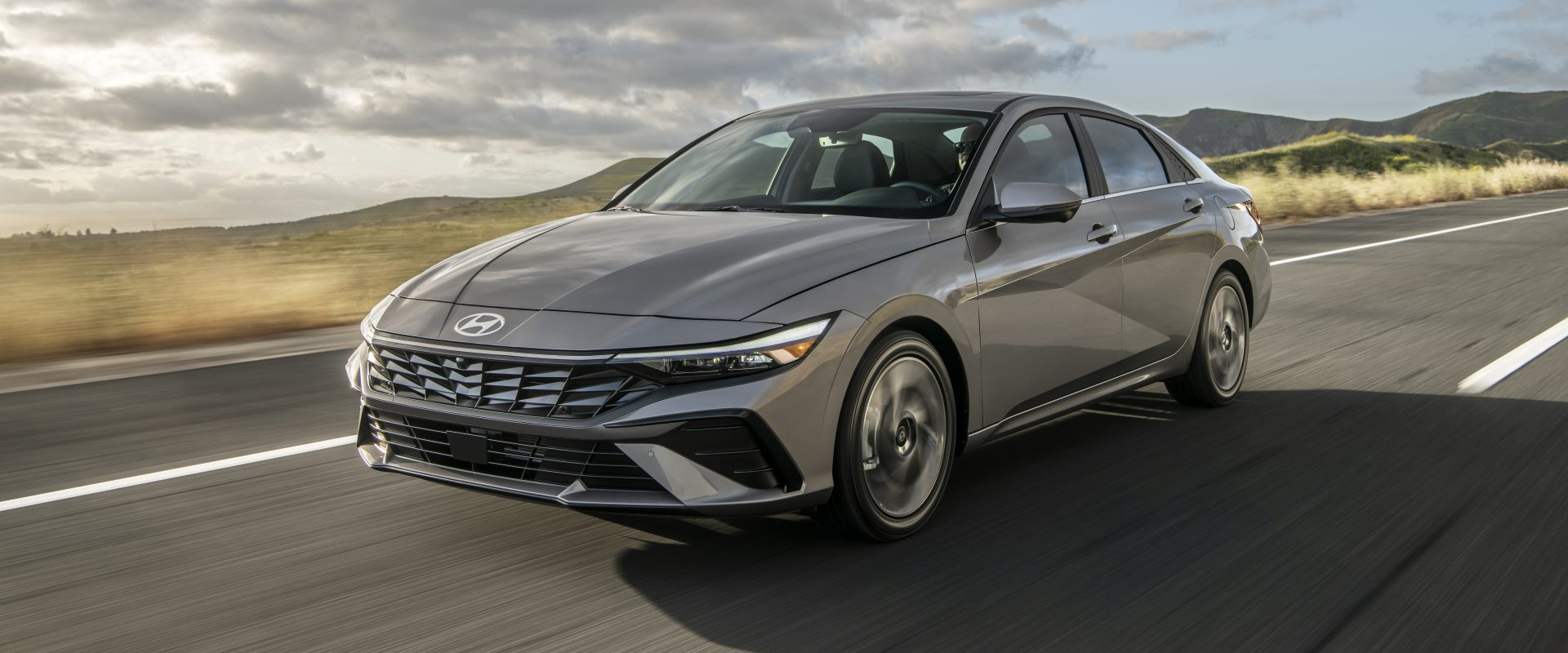2014 Acura MDX
A pioneer among luxury crossovers, the Acura MDX has certainly been a success; and at times has been the brand’s top selling model. So its importance to Acura cannot be overstated. Well now it’s time for an all-new third generation MDX, and it could go one of two ways. Will the 2014 Acura MDX be more of the same, hoping to keep current customers happy? Or will Acura make drastic changes in order attract lots of new ones? Let’s find out!
The 2014 Acura MDX mid-size luxury crossover arrives on the scene with a difficult mission; improve what needs improving without changing too much; and oh yeah, give buyers something extra that they weren’t expecting and then don’t want to live without.
Well, hopefully more power wasn’t on the list of buyer wants, as it is actually down from last year to 290-horsepower thanks to a smaller direct injection 3.5-liter V6 engine from Acura’s flagship RLX. Torque output is also down slightly to 267 lb-ft. But, the devil is in the tuning details as it actually feels more powerful, and Acura claims the 0-60 time is half a second quicker.
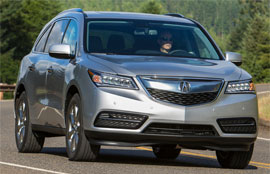 In fact the whole MDX feels sportier than before, which is saying something as it was already among the best handling CUVs. Although at times it did feel like the SUV-ed up mini-van that it was. No more! The new MDX has a new platform no longer based on the Honda Odyssey. Wheelbase is up almost 3 inches and overall length by 2. But both height and width are less.
In fact the whole MDX feels sportier than before, which is saying something as it was already among the best handling CUVs. Although at times it did feel like the SUV-ed up mini-van that it was. No more! The new MDX has a new platform no longer based on the Honda Odyssey. Wheelbase is up almost 3 inches and overall length by 2. But both height and width are less.
Despite more length, weight is actually down by 275 pounds. That aids handling, as does the all-new front strut suspension with triple-path mounting, a more compact multi-link in rear, roll control dampers, and the RDX’s brake augmented Agile Handling Assist. A new 3-mode Integrated Dynamics System helps as well. Set the selector to Sport and you’ll get more steering feedback, quicker drive-line response, and even some additional engine noise in the cabin.
A paddle shift 6-speed automatic is the only transmission and towing capacity remains at 5,000 pounds.
The exterior of the new MDX may look a little vanilla, but we think it’s a refreshing change from some of the more “out there” Acura’s of late. The front end is smoother with the RDX’s jewel-eye, buggy LED lighting, though the shield grille remains. The overall shape is more aerodynamic with a downward sloping roof that leads to a more substantial looking rear.
Wheel options range from standard 18-inch gray finish alloys to your choice of 19’s. A big change is that front-wheel drive is now standard. A bow to buyers in warmer climates who resist all-wheel drive. Fortunately, Acura’s Super Handling All-Wheel-Drive is still optional, and we highly recommend it no matter where you live since it too aids the MDX’s sporty performance.
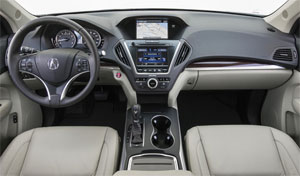 Inside, you’ll find a little more luxury than before, and things have gotten a bit quieter. There continues to be no shortage of high tech, with items like a new On Demand Multi-Use Display, which features a touch screen with haptic feedback, and helps reduce the button overload of the previous MDX. Only 9-buttons remain but unfortunately, no knob for changing stations.
Inside, you’ll find a little more luxury than before, and things have gotten a bit quieter. There continues to be no shortage of high tech, with items like a new On Demand Multi-Use Display, which features a touch screen with haptic feedback, and helps reduce the button overload of the previous MDX. Only 9-buttons remain but unfortunately, no knob for changing stations.
There’s AcuraLink with standard Bluetooth and text messaging along with Aha internet radio, but you’ll have to step up to the Technology Package to get navigation. A multi-angle rear view camera however, is standard.
All MDX’s are 3-row, 7-passenger with front and middle seating plenty comfortable for adult long hauls. Access through the rear doors is wider and lower, and the new One-Touch slide mechanism is the best access to the 3rd row we’ve tried yet. But, it’s still a “child only” zone back there. Either of the two available rear entertainment options can help pass the time, whether you choose the 9-inch screen or the 16-inch wide screen.
Government Fuel Economy Ratings are well up over last year at 18-City, 27-Highway, and 21-Combined with all-wheel-drive. Front drive at 20-City, 28-Highway, and 23-Combined. Premium Fuel is now recommended instead of required. With AWD, the Energy Impact Score is a good 15.7-barrels of annual oil consumption; with yearly CO2 emissions of 6.9-tons.
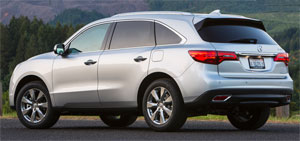 Pricing for the MDX has dropped slightly; starting at $43,185, but keep in mind that’s for front-wheel-drive. All-wheel-drive models start at $45,185.
Pricing for the MDX has dropped slightly; starting at $43,185, but keep in mind that’s for front-wheel-drive. All-wheel-drive models start at $45,185.
The 2014 Acura MDX is a very competent redesign. Designers managed to improve it by becoming both more capable, more fuel efficient, and more accessible, without changing in ways that would turn off current owners. It may not be the most exciting luxury crossover to look at, but its appeal has never been greater.
Specifications
- Engine: 3.5-liter V6
- Horsepower: 290
- Torque: 267 lb-ft.
- EPA: 20 mpg city/ 28 mpg highway
- Energy Impact: 15.7 barrels of oil/yr
- CO2 Emissions: 6.9 tons/yr
2024 Hyundai Elantra
Basic Transportation At Its Best…And That Is A Compliment
For those of you who write in every week bemoaning the fact that all we seem to do around here is test incredibly expensive cars and EVs that only the very well to do can afford, this one’s for you. It’s a commuter and budget friendly mainstay from Hyundai, the compact Elantra sedan. And, it has been nicely updated for 2024.
We clearly do enjoy driving high-performance machines and ultra-luxury rides around here, but like most of you, when it comes time to drive home at the end of a long workday, we do so in something much more practical and affordable, like this 2024 Hyundai Elantra sedan.
If you’re thinking the front end has gotten more aggressive, you’re right. Hyundai calls it a “Shark Nose” theme, and we’re guessing they were thinking more Great White than Hammerhead, though Megamouth shark would also apply. It helps for a low and wide look; more substantial than the typical compact. Other additions for ’24 include slimmer daytime running lights, revised stainless steel Hyundai emblem, reshaped front fenders, sport sedan-style rear diffuser with silver trim; a parametric pattern added to the C-Pillar, and new LED taillights that take up a lot more space on the highly sculpted decklid. Plus, new wheel designs in sizes ranging from 15- to 18-inches.
Standard engine in SE, SEL, and Limited grades is this naturally aspirated 2.0-liter I4 with 147 horsepower and 132 lb-ft of torque. Even with no hybrid assistance, it gets substantial Government Fuel Economy Ratings of 31 City, 40 Highway, and 34 Combined; we averaged a great 38.6 mpg of Regular.
Those high fuel economy numbers mean acceleration times are pretty high as well. It was in no particular hurry to get off the line at our test track, as after a slight jolt of power, it felt pretty sluggish going down the track, taking us a lengthy 9.4 seconds to hit 60 mph. Hyundai’s Intelligent Variable Transmission has some realistic simulated gear shifts built in, and they not only provided the feel of a true automatic, but kept engine noise from becoming overbearing. And while this 2.0-liter may not be a house-on-fire off the line, it has no problem keeping up with traffic, and feels like just the perfect amount of power for a practical and safe commuter car.
There are other engine options too. Two choices if you want to go faster, a 1.6-liter turbo with 201 horsepower in the Elantra N Line, and a 276-horsepower turbocharged 2.0-liter for the Elantra N; plus, one with even better fuel economy, a 1.6-liter hybrid with a 139 horsepower total output.
And despite some significant understeer, there was good feel through the cones of our handling course, both in steering and chassis feedback. We wouldn’t quite call it “point and shoot,” but it responded to inputs fairly quickly, with only moderate body roll. All-in-all, when it comes to performance, it doesn’t claim to bring a whole lot to the table, but does clearly overachieve with what it does bring.
And Hyundai is always overachieving when it comes to packing in features, yet has found a way of keeping things refreshingly simple with a good mix of touchscreen and manual controls. Lots of space too, both up front in the surprisingly wide front buckets, and in the rear bench with ample room for three. Updates for all Elantra interiors include softer materials on the door panels, upgraded instrumentation and additional charging ports, plus a surround view monitor and new H-Tex simulated leather for Limited trim.
Elantra pricing starts with an SE at $22,775, the SEL comes in at $24,725, Limited begins at $28,215, and the sporty N Line starts at $29,615. If you’re interested in the hybrid, base Blue starts at $27,400 with Limited at $30,600.
Some might say there’s not a whole lot that’s earth shaking about the 2024 Hyundai Elantra, but that’s mostly why we like it so much. When it comes to just delivering good, basic transportation with a high dose of unexpected amenities, Hyundai delivers once again.
Specifications
- Engine: 2.0-liter I4
- Horsepower: 147
- 0-60 mph: 9.4 seconds
- 60-0 Braking: 111 ft (avg)
- MW Fuel Economy: 38.6 MPG (Regular)
- Transmission: IVT
- Torque: 132 lb-ft
- 1/4 Mile: N/A (Track Maintenance)
- EPA: 31 City / 40 Highway / 34 Combined




